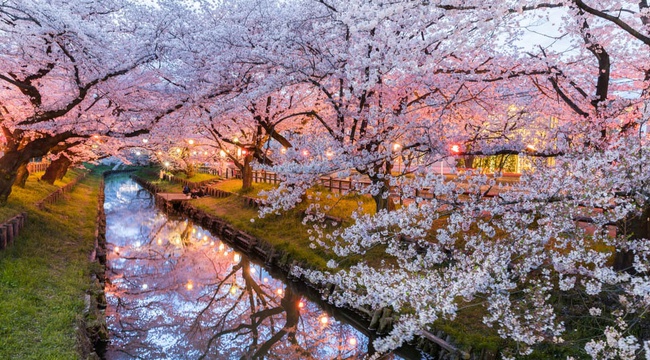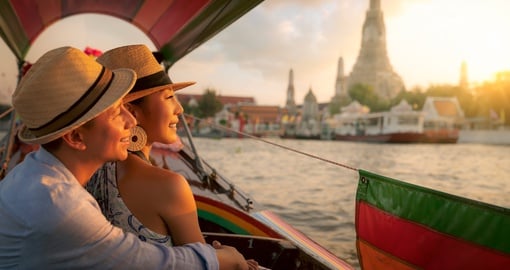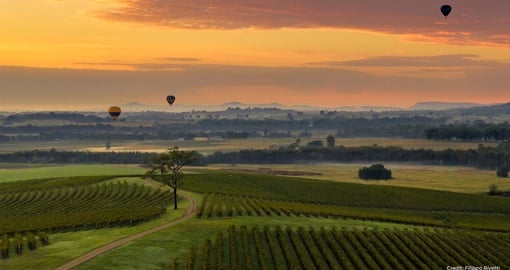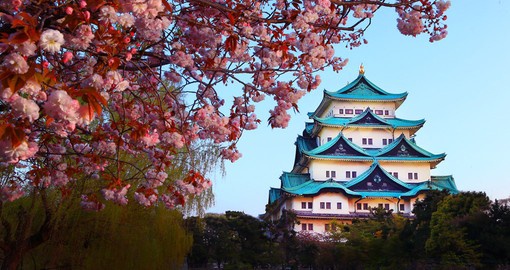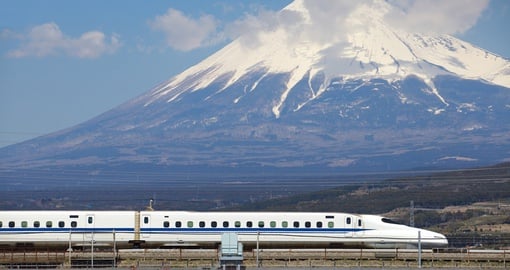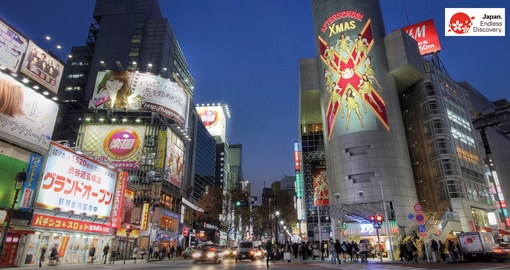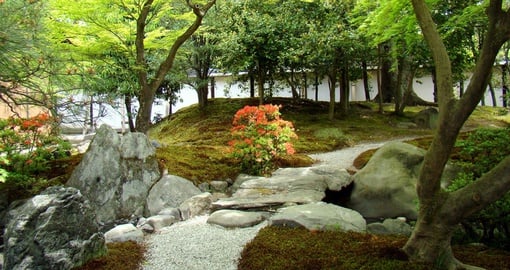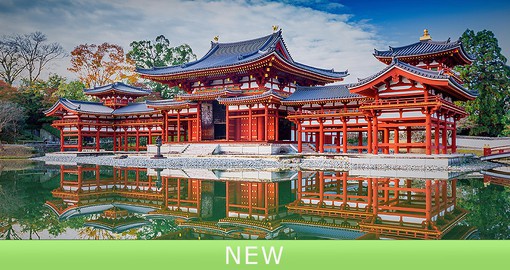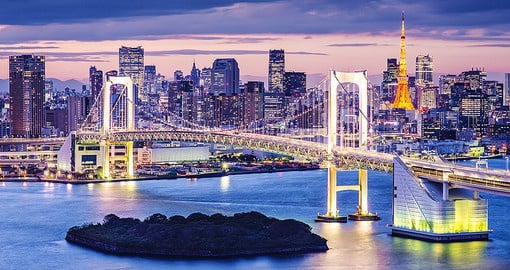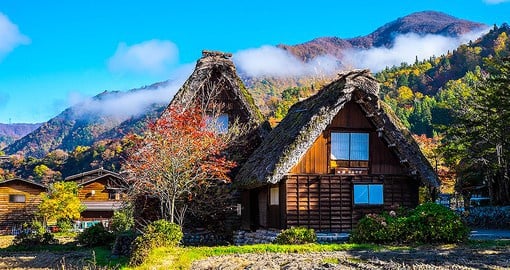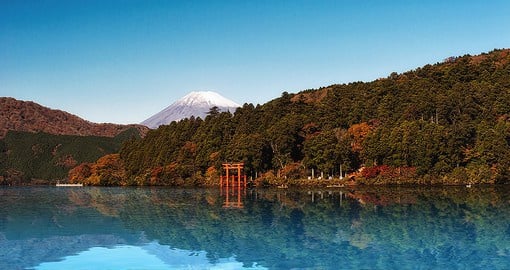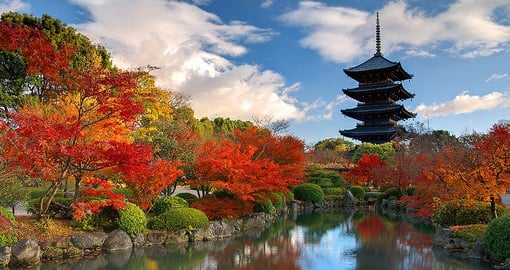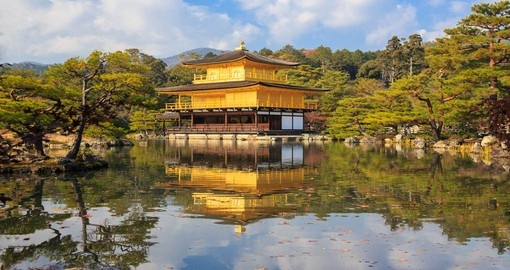Essential Facts
Currency
The Japanese Yen (JPY) is the main form of currency in Japan. Unlike in most other developed nations, cash is still more common than credit and debit in Japan. It’s easy to take out cash at ATMs, which are located at all banks and in convenience stores such as 7-Eleven and Family Mart.
Language
Japanese is the main language spoken all across Japan. You’ll find that English is spoken by tourism professionals and many young people in the major cities such as Tokyo and Kyoto, but it is not common across the country, especially in smaller centres and rural areas. Understanding and speaking a little bit of Japanese is greatly appreciated while travelling here and can go a long way towards ingratiating you to the locals.
Best time to go
The cherry blossom (hanami) season in April is the most popular time of the year to travel to Japan, but it’s also the most expensive and busiest time to visit. Fall is also popular as forests turn red, yellow, and gold. Snowy winters bring their own stark beauty to the landscape and a wide range of unique experiences to enjoy, so there is really no ‘bad’ time to visit Japan,
More information on the best time to visit Japan.
Climate
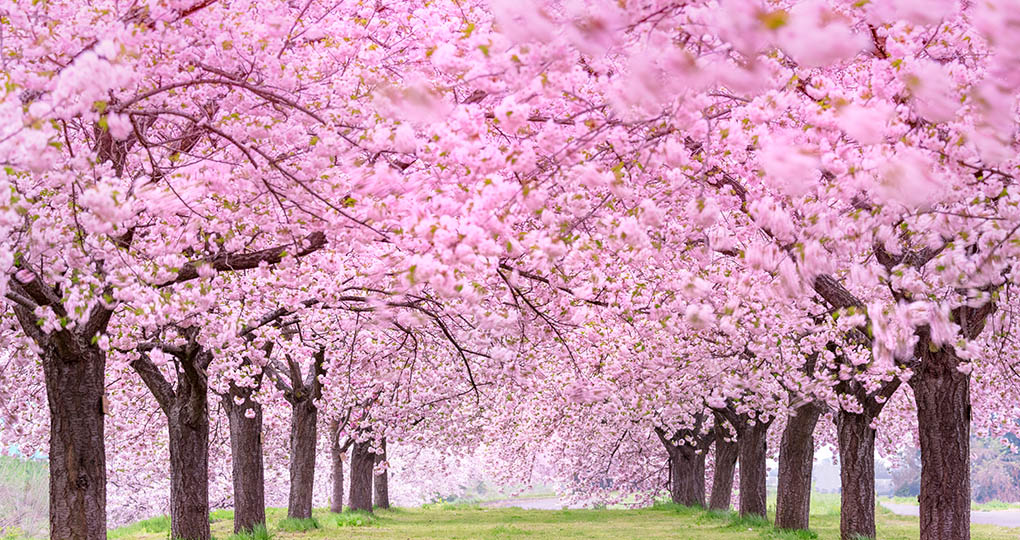
Japan has four distinct seasons, each bringing a very different appearance, flavour, and range of activities to your travels. Southern islands such as Okinawa experience mild winters and hot, humid summers while Hokkaido, in the north, sees a warm summer and cold, snowy winters ideal for skiing. Honshu, Japan’s largest and most populated island sees both hot, humid summers and snowy, but strikingly beautiful winters.
Ideal traveller
Japan has something to appeal to every kind of traveller, from foodies to history buffs to nature lovers. However, it’s more ideal for cultural travellers than someone who just wants to enjoy an idyllic escape at a beach resort or get lost in the wilderness. While there are certainly ‘bucket list’ sights, Japan’s appeal lies in cultural immersion, exploring the country as a whole experience.
Getting There from North America
Major Airports
Air traffic into Tokyo is split between Tokyo Haneda International Airport, on Tokyo Bay, and Tokyo Narita International Airport, located 50 minutes away by train. Kansai International Airport on Osaka Bay is the main gateway to Osaka and the surrounding region, including Kyoto and Nara. It should not be confused with the smaller Osaka International Airport at Itami, which, contrary to its name, now serves only domestic Japanese flights.
Major Air Routes from the United States
In the United States, most major cities have direct flights to Tokyo, including New York, Chicago, Dallas, and Los Angeles.
Major Air Routes from Canada
In Canada, most direct routes go through Vancouver or Toronto Pearson.
Essential Sights of Japan
Tokyo
Japan’s capital city, a ‘megalopolis’ where glimpses of the future tower over traditional shrines, gardens, and the Imperial Palace. Nowhere captures the energy, attitude, and allure of Japan quite like Tokyo.
Mt. Fuji
Japan’s largest mountain and most distinctive natural icon. It’s easily accessible on a day trip from Tokyo.
Kyoto
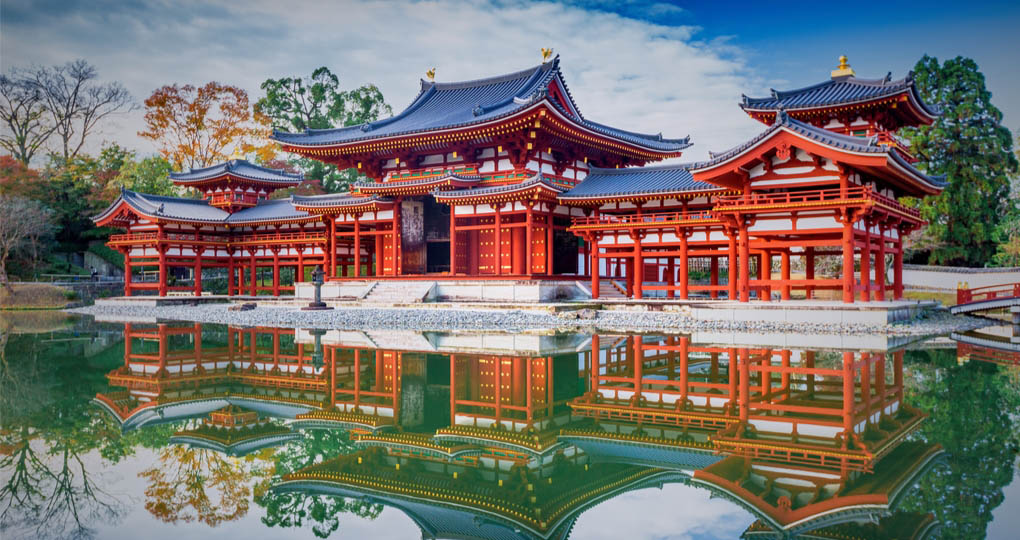
The traditional capital and commonly praised as Japan’s most beautiful city. Packed with temples and gardens, it will satisfy your interest in history and nature, along with Shinto and Buddhist traditions, and is a must-see while in Japan.
Nara
This small city enchants with a perfect trifecta of beauty, history, and nature. Wild deer roam the fields of Nara Park, where you’ll also find a variety of impressive temples including Todai-ji, home to the famous Daibutsu-den or Great Buddha Hall.
Other Highlights of Japan Off the Beaten Path
Osaka
Japan’s less formal second city, with its own distinct cuisine, dialect, and attitude. Be sure to experience the culinary scene and nightlife, where traditional formality is eschewed in favour of the best flavours at the best price.
Takayama
This town personifies the beauty of Japan’s rural regions, tucked away in the Japanese Alps, but easily accessible on the train lines. In Takayama, each day greets you with startling mountain views and offers a chance to engage with traditions kept alive far from the big cities.
Fukuoka
The largest city on the southernmost island of Kyushu and quickly becoming a hotspot for trendsetters who are electrified by its innovative food scene and onsen or spa culture, courtesy of the natural hot springs on the island.
Top Activities and Experiences
Ryokan Stay
There’s no better way to experience life as the Japanese do than to stay at a traditional Japanese inn known as a ryokan. At a ryokan, guests sleep on futons set upon tatami-matted floors, bathe in shared onsen or spa facilities, and wear slippers and traditional robes to meals and other social gatherings. A ryokan offers a quiet atmosphere and a natural taste of Japanese good living.
Sumo Match
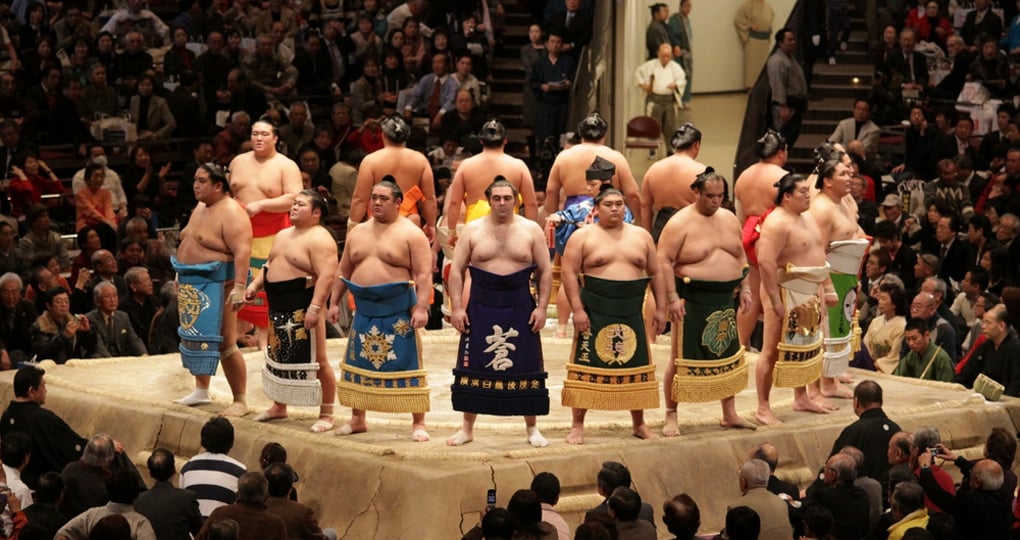
A legacy of ancient Shinto tradition, designed as entertainment for the gods, Sumo remains Japan’s national sporting obsession. In January, May, and September of each year, the big boys posture and tumble at Tokyo’s Ryogoku Kokugikan. The action moves to Osaka in March, Nagoya in July, and Fukuoka in November, with each tournament lasting 15 days.
Toyosu Fish Market
In Fall 2018, Toyosu officially took over from fabled Tsukiji Market as the centre of Tokyo’s fish trade. The new market is better prepared for curious visitors, with spectator slots for the famous tuna auction allocated by online lottery. It’s still free, boasts a better view than at Tsukiji, and has a now (slightly) more forgiving start time of 5.30am.
Buddhist Temple Stay
Those travellers hoping to take a break from neon-soaked cities and engage with the country’s Buddhist traditions can arrange for an overnight stay at a Buddhist temple, such as on Mt. Koya on the Kii Peninsula southeast of Osaka. Travellers take part in daily routines, including meditation and cleaning, while also eating Buddhist vegetarian meals and observing first-hand the contemplative lives of the monks.
Essential Japanese Foods to Try
Sushi
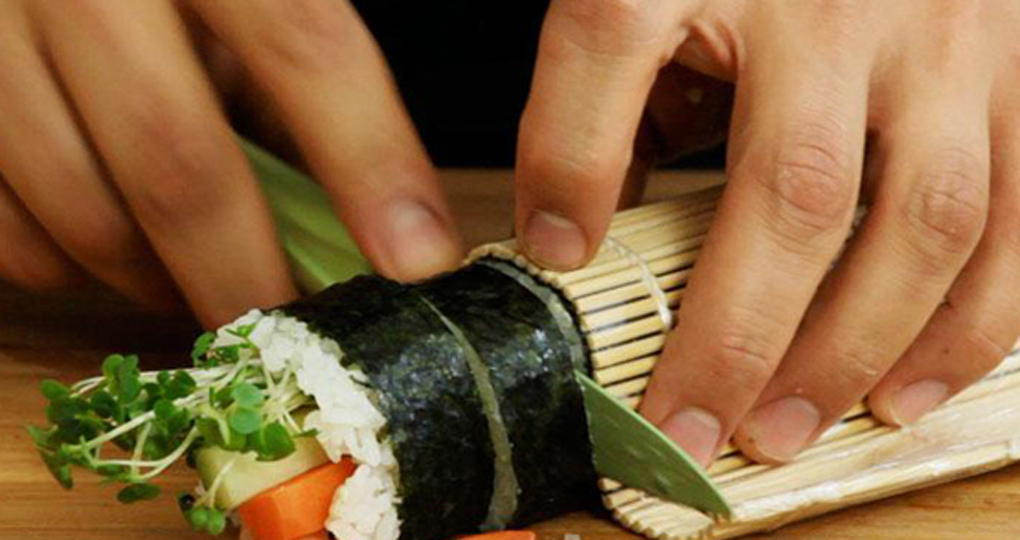
Sushi has quickly become the most popular Japanese dish in the world, but there’s nothing quite like the sushi you’ll find in Japan. Whether you’re eating at a popular restaurant near the Toyosu Fish Market or a hole-in-the-wall inn in Kanazawa on the west coast, you’ll find this humble dish of fish and rice is something of an artform in Japan, one that favours freshness and impeccable presentation above everything else.
Ramen
This noodle dish may not be as popular as sushi abroad, but it has outflanked sushi’s popularity back home in Japan. Inspired by Chinese cooking, ramen is a dish of wheat noodles served in a savoury broth, often flavoured by soy, miso, or other ingredients such as black sesame. At a ramen restaurant, you usually eat at a counter facing the cooks and are encouraged to slurp down the noodles and broth quickly in order to accommodate the steady flow of customers. There are many varieties of ramen, including vegetarian options, but hakata, hailing from Fukuoka, is especially popular.
Kaiseki
Japan’s answer to haute-cuisine, which does not describe a particular dish, but a manner of eating that draws on hundreds of years of Japanese tradition. Kaiseki is a multi-course meal often served in fine dining establishments or at traditional inns known as ryokan. Each course captures a theme or reflects a particular style of cooking, such as soups, rice dishes, or seasonal specialties.
Tips for Sustainable Travel
Buy a JR Pass to suit your itinerary and make the most of Japan’s excellent high speed rail system. You can even send your luggage ahead between major cities while you disembark at an interim stop (just bring a small overnight bag).
Public transit is also top notch in the major cities, and is fairly easy to navigate once you understand the different systems. Note that your JR pass will only cover you on JR lines. Pick up a rechargeable Icoca, Pasmo or Suica card if you’re up to the challenge of exploring on your own, and don’t forget to return it for a refund when you leave.
Where to Go Next
With direct flights and a culture unlike any other, Japan is often a self-contained trip. However, the wide variety of Asian airlines servicing Tokyo and Osaka makes it easy to add an Asia stopover such as Seoul, Taipei, Hong Kong, Shanghai, or Beijing.
Most Popular Itineraries for Japan
The Japan Delights with Rail offers an ideal week-long introduction to Japan, using a 7-day Japan Rail Pass to take in Tokyo, Nagoya, Kobe, Hiroshima, Kyoto, and Nara, as well as historical landmarks like Himeji Castle and the island shrine of Miyajima. Cultural Japan spends more time in cultural hotspots such as Tokyo, Kyoto, Takayama, Kanazawa and Mt. Fuji. Highlights of Japan extends the trip with a longer stay in Kyoto.
22 May 2020, 9:24 p.m.


